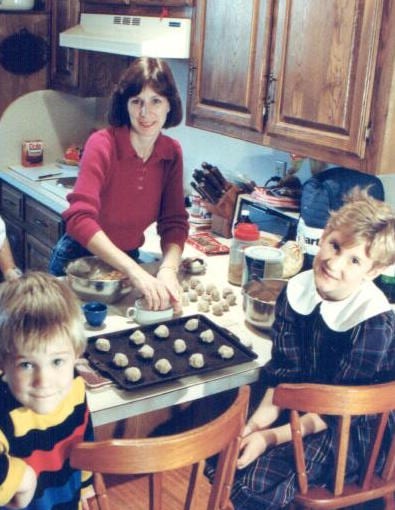Perhaps you’ve seen an adaptation of Charles Dickens’ novella A Christmas Carol, a ghost story of Christmas. Last year, my daughter, son, and his partner visited us at Christmastime. As part of our festivities, we attended the American Shakespeare Center’s performance of A Christmas Carol, the on-stage version.
We sympathized with the young Ebenezer Scrooge in scenes from Christmas Past. In Christmas Present, we saw his missed opportunities for sharing joy and serving the needy—children such as Tiny Tim and the waifs named Ignorance and Want. Then the Ghost of Christmas Yet to Come showed us Scrooge’s future, the death of a “wretched man.”
 I certainly identified with Christmas Past—stockings, lights, and Christmas trees with gifts overflowing, greeting cards, guests, refreshments, and cookies—from my childhood and my children’s.
I certainly identified with Christmas Past—stockings, lights, and Christmas trees with gifts overflowing, greeting cards, guests, refreshments, and cookies—from my childhood and my children’s.
Our Christmas Present involves less decorating, less shopping, and less cooking. But Keith and I still send many cards and attend or host at least as many celebrations. We share the dozens of cookies I bake with folks at church, so the two of us don’t eat them all.
What images do I have for Christmas Future? I’d like to think our Christmases would be like the past and present. But more likely there will be less—and more, if I choose.
The message of A Christmas Carol centers on Scrooge, the protagonist, a man blind to his faults and dismissive of his goodness. He thinks himself virtuous for his frugality and angrily says, “Bah! Humbug!” to those who sing, “God Rest Ye Merry Gentlemen,” a song of redemption.
A Christmas Carol is a Christian story of sinfulness, regret, repentance, and salvation.
Remember, Christ, our Saviour, was born on Christmas day
To save us all from Satan’s power when we were gone astray
O tidings of comfort and joy, comfort and joy, O tidings of comfort and joy.
How was Scrooge saved from anger? How did he transform to joy? He removed his blinders and confessed his sins; he gave up his dismissive, “Are there no prisons? Are there no workhouses?” He opened his tight fists to those in need.
In fact, he represented the need of all.
It’s unrealistic to think that Scrooge or any of us transform so quickly. And we never change completely. We have both darkness and light inside—our humanity. But if we accept imperfection, the messiness and mystery, we are better able to give and receive comfort and joy. We, like Scrooge, learn how to love.
That’s the more I want to choose.



Well written message! My “refresher” study this week is Luke chapter two! Wonderful message of the God man coming to redeem fallen man!